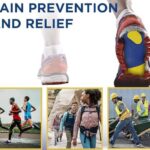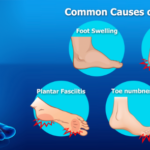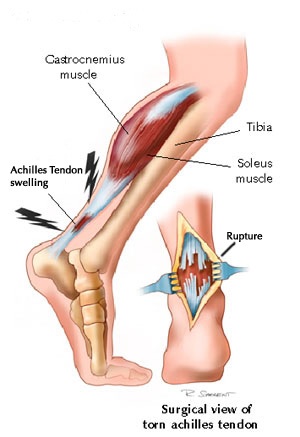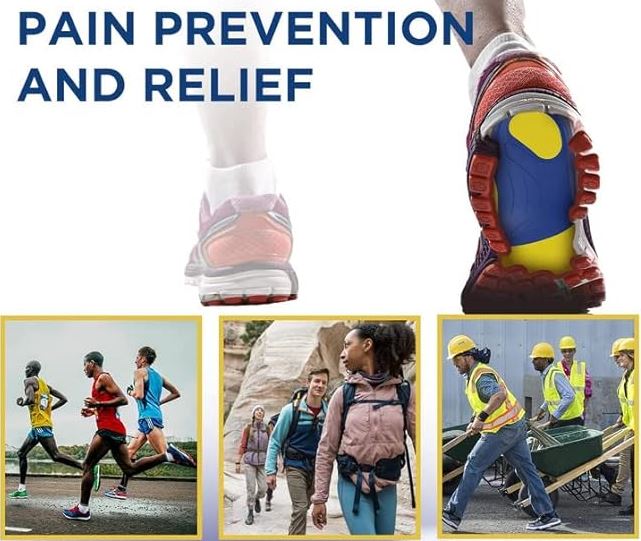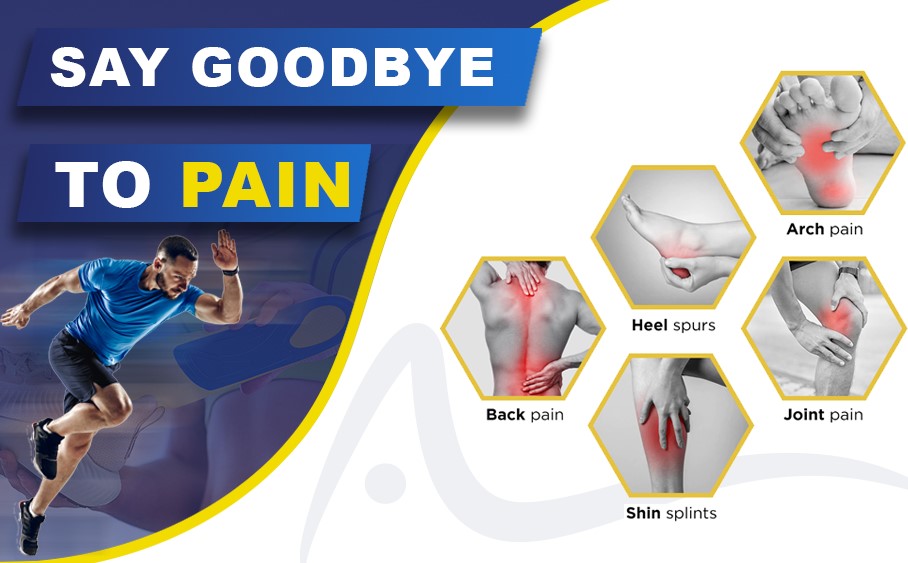The Achilles tendon, one of the body’s most critical tendons, plays a pivotal role in mobility. However, when afflicted by Achilles tendonitis, this tendon’s inflammation can cause discomfort, affecting movement and everyday life. To combat this condition and aid recovery, understanding arch support solutions is crucial.
Introduction to Achilles Tendonitis
Achilles Tendonitis is a condition that affects the Achilles tendon, a crucial structure located at the back of the ankle. This tendon is essential for basic movements like walking, running, and jumping. When this tendon faces excessive strain or overuse, it can become inflamed and irritated, resulting in Achilles Tendonitis.
The inflammation typically leads to pain and stiffness around the heel or lower calf area. This discomfort can range from mild to severe and may interfere with everyday activities, especially those that involve putting weight on the affected foot.
Several factors can contribute to the development of Achilles Tendonitis. Intense physical activities, sudden increases in exercise frequency or intensity, improper footwear choices, or even inherent structural issues with the foot can trigger this condition.
For individuals engaged in sports or physical activities, Achilles Tendonitis can be particularly challenging. It’s essential to recognize its symptoms, understand its causes, and explore effective treatment options, including the role of arch support, to facilitate recovery and manage the condition effectively.
Understanding Arch Support
Arch support is a crucial element in foot health and recovery, especially when dealing with conditions like Achilles Tendonitis. It refers to the reinforcement provided to the arches of our feet to maintain their natural structure and functionality.
The arches of the foot serve as shock absorbers, distributing the body’s weight evenly across the foot while walking, standing, or engaging in physical activities. When these arches lack adequate support, it can lead to strain on various parts of the foot, including the Achilles tendon.
Understanding the role of arch support involves recognizing its ability to minimize stress on specific areas, such as the Achilles tendon, which is particularly prone to injury and inflammation. Proper arch support helps in maintaining optimal alignment of the foot, reducing excessive strain, and mitigating the impact of physical activity on the affected tendon.
There’s a range of arch support options available, from orthotic insoles customized to provide targeted support to footwear specifically designed with arch support features. These aids work towards enhancing foot stability, promoting proper alignment, and alleviating discomfort associated with Achilles Tendonitis.
By incorporating suitable arch support, individuals can effectively manage Achilles Tendonitis, facilitating a more comfortable recovery process and reducing the risk of further strain or injury to the affected tendon.
Arch Support Solutions for Achilles Tendonitis
Atlas Arch Support is a specialized solution designed to address Achilles Tendonitis and related foot issues. These arch supports are crafted to provide targeted relief and support to the arch of the foot, aiding in the recovery process from conditions like Achilles Tendonitis.
The Atlas Arch Support offers a combination of firm support and cushioning, aiming to distribute pressure evenly across the foot. By providing stability to the arch, it helps reduce strain on the Achilles tendon, thereby minimizing discomfort and promoting a more comfortable recovery.
These arch supports are often customizable or available in various sizes to cater to individual foot shapes and support needs. They can be incorporated into footwear to ensure consistent support throughout daily activities, aiding in the management of Achilles Tendonitis.
Utilizing Atlas Arch Support as part of the treatment plan for Achilles Tendonitis can contribute significantly to alleviating pain, supporting the affected tendon, and facilitating a smoother recovery process.
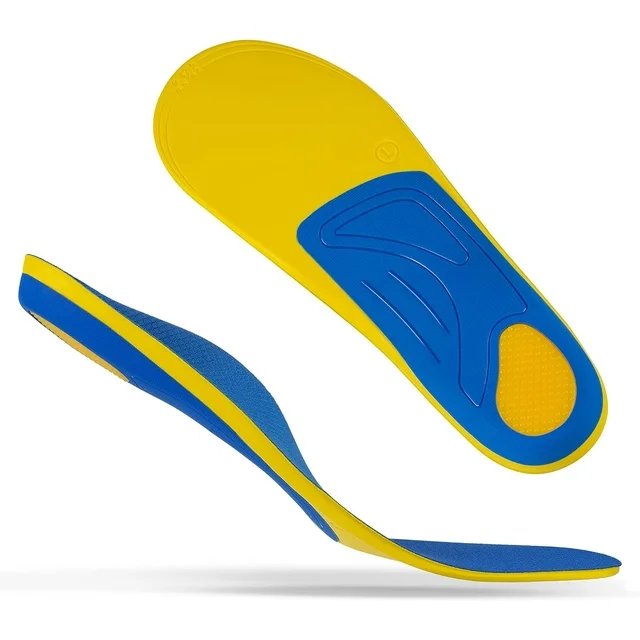
IV. Lifestyle Adjustments for Recovery
- Rest and Recovery: Giving the affected tendon time to heal is essential. Avoid activities that strain the Achilles tendon and incorporate adequate rest periods into your routine.
- Proper Footwear: Wearing supportive shoes with adequate arch support can significantly reduce strain on the tendon. Opt for shoes with cushioning and a proper fit to promote healing.
- Gradual Exercise: Gradually reintroduce physical activity and exercise after the acute phase of Achilles Tendonitis. Start with low-impact activities and slowly increase intensity to prevent re-injury.
- Stretching and Strengthening: Engage in gentle stretching exercises to improve flexibility and strengthen the calf muscles. This can alleviate tension on the tendon and aid in recovery.
- Weight Management: Maintaining a healthy weight reduces stress on the Achilles tendon. Adopting a balanced diet and exercise routine can help manage weight effectively.
- Avoid Overuse: Be mindful of activities that put excessive strain on the tendon. Modify or limit activities that aggravate the condition to prevent further damage.
- Foot Support in Daily Activities: Consider using supportive footwear or orthotic inserts throughout the day, even during non-physical activities, to provide continuous support to the affected tendon.
By implementing these lifestyle adjustments, individuals can effectively support the healing process, reduce discomfort, and prevent the recurrence of Achilles Tendonitis.
Preventative Measures
- Proper Footwear: Wear appropriate shoes for different activities. Opt for footwear with good arch support and cushioning to reduce stress on the Achilles tendon.
- Gradual Exercise Progression: Avoid sudden increases in exercise intensity or duration. Gradually progress and warm up before engaging in rigorous physical activities to allow the body to adjust.
- Stretching Routine: Incorporate regular stretching exercises for the calf muscles and Achilles tendon. This improves flexibility and reduces the risk of strain during physical activities.
- Cross-Training: Vary your exercise routine to avoid overuse of specific muscles and tendons. Incorporate low-impact exercises like swimming or cycling alongside high-impact activities.
- Proper Technique: Ensure proper form and technique during sports or exercise to prevent unnecessary strain on the Achilles tendon.
- Rest and Recovery: Allow sufficient time for rest between workouts to give the tendon adequate recovery time.
- Maintain a Healthy Weight: Excess weight can put added stress on the Achilles tendon. Maintain a healthy weight through a balanced diet and regular exercise.
- Regular Check-ups: Visit a healthcare professional for regular check-ups, especially if you’re prone to foot or tendon-related issues, to address any potential concerns early.
By incorporating these preventative measures into your lifestyle, you can significantly reduce the risk of developing Achilles Tendonitis and maintain better foot health.
Conclusion
Achilles tendonitis can significantly impact an individual’s mobility and daily life. However, with a comprehensive approach involving arch support solutions, lifestyle adjustments, and preventive measures, effective recovery and mitigation of the condition are possible.

